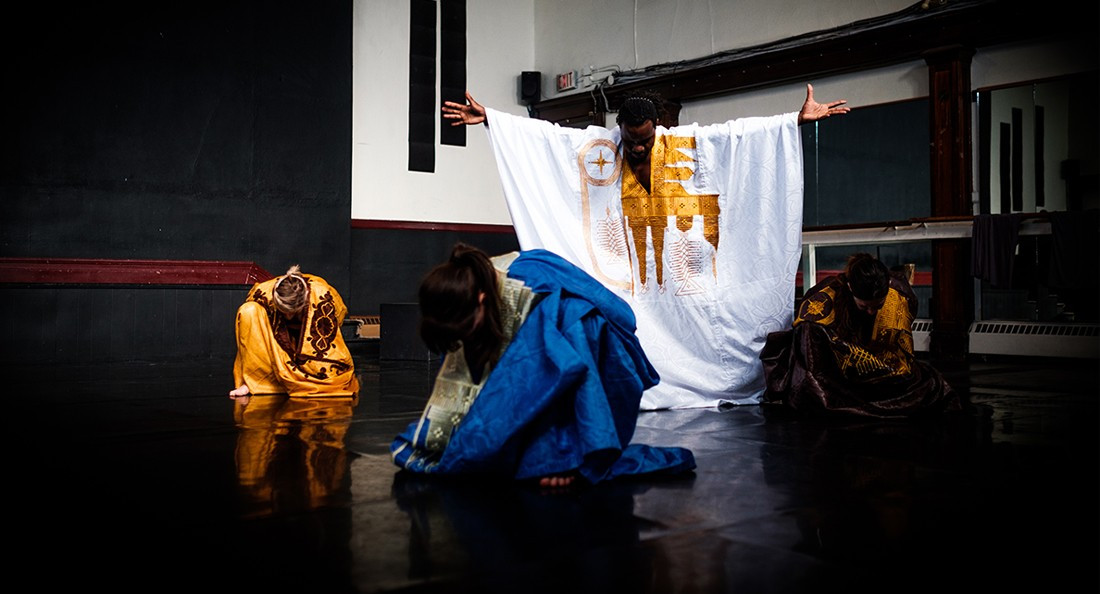Dance as a bridge
New contemporary works reflect shared culture
Yofanana, NAfro Dance Productions’ upcoming show, cuts to the heart of human connection.
Artistic director and founder of NAfro, Casimiro Nhussi, says that the show explores the similarities between Africa and India. The dance pieces focus on cultural likeness but are meant to evoke a sense of recognition for everyone who encounters them.
Nhussi describes how the history of trade between Mozambique (Nhussi’s homeland), India and other nearby countries and cultures influenced the work.
People “used to be (in) circulation, even before (colonizers) came,” Nhussi says. “Beads to make all these beautiful African outfits (and) even spices for food,” are examples of traditional objects of trade across the Indian Ocean. One way Yofanana pays tribute to this history is via African- and Indian-inspired costumes.
“Sometime(s), today, we don’t think about similarity. We think about ‘you this one, and I am this one,’ but as human(s), we have a lot in common,” Nhussi says.
“The point is not of focusing on who did what, or where what vocabularies come from. It’s that similarity that, that’s the point.”
Yofanana is choreographed by both Nhussi and Roger Sinha.
“All the movement from Africa is based on people’s lives,” Paula Blair, a long-standing dancer and member of NAfro, says of Nhussi’s process. “This movement is because they were toiling the ground, or this one because there was a drought … he has this amazing ability to have all that and then blend it into contemporary.”
This is combined with Sinha’s blend of Indian and contemporary dance and is accompanied by a live musical score composed by Nhussi himself.
“There’s a lot of trust there that’s unusual and very special,” Blair says of the collaboration between Nhussi and Sinha.
It is a unique community that leads to such a connective environment.
“I find Winnipeg (to be) one of the most unique dance communities in contemporary dance,” Blair says. “It’s a very vibrant community.”
Nhussi hopes that the future of Winnipeg’s dance community includes greater cultural diversity amongst professional dance companies. NAfro, founded in 2002, has paved the way for an African contemporary in Winnipeg.
“We have dancers, they train in African contemporary, and some of them I mentor here,” Nhussi says. He adds that some dancers even travel to Winnipeg to work with NAfro.
Dance companies can give performers jobs, opportunities and more.
“You open a little bit more the mindset of dancers not just to be ballet and contemporary, per se, because contemporary way(s) of looking could be contemporary Indian, contemporary African, contemporary Chinese,” Nhussi says. “It can be wide open range. So if you have it, a place, then those dancers, they will choose to train in that direction, because they know (they) can get access to this or that.”
Blair describes contemporary dance as “open.”
“There isn’t a set vocabulary. It can be anything,” she says.
“Dance is for people. Dance was born for people and dance is for people. It doesn’t matter where, which society, you come from,” Nhussi says.
Yofanana will be performed at the Gas Station Theatre (445 River Ave.) March 2 and 3 at 8 p.m and March 4 at 2 p.m. Tickets range from $15 to $25, and are available at nafrodance.com, in person at the theatre or at the door (cash only).
Published in Volume 72, Number 19 of The Uniter (March 1, 2018)








